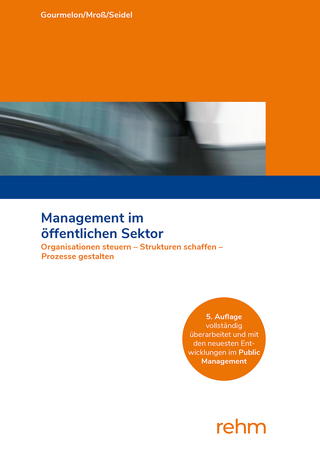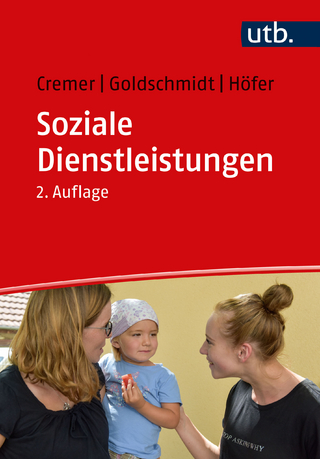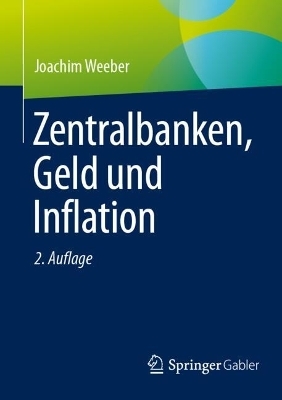
Applied Welfare Economics
Routledge (Verlag)
978-1-032-02218-5 (ISBN)
Massimo Florio is Professor of Public Economics and Jean Monnet Chair “ad personam” of EU Industrial Policy at the University of Milan, Italy. Chiara Pancotti is Adjunct Professor of Cost-Benefit Analysis at Università degli Studi di Milano and Senior Researcher at the Centre for Industrial Studies, Italy.
Chapter 1: On Social Welfare
Overview
1.1. The concept of social welfare*
1.1.1 Gross Domestic Product as welfare measurement
1.1.2 Income and final consumption
1.1.3 A digression on money in welfare economics
1.2. The welfare assumptions behind GDP and NNP
1.3. Individual and social welfare
1.4. Determinants of individual welfare: goods
1.5. Determinants of social welfare: individual utilities
1.5.1 Aggregating individual utilities
1.5.2 Interpretation of welfare weights
1.6. Sen’s critique of individualistic Social Welfare Function
1.7. Paternalism and not (only) individualistic Social Welfare Functions
1.8. Happiness economics
1.9. ‘Positive’ analysis
1.10. Further reading
1.11. Summary of Chapter 1
Chapter 2: The two Fundamental Theorems re-examined
Overview
2.1. Theorems versus Intuitions
2.2. The Arrow-Debreu (AD) Economy (*)
2.3. The axiomatic structure (*)
2.4. Consumers, producers and government: objectives and constraints (*)
2.5. The Walrasian equilibrium
2.6. The two Theorems without ideology
2.7. The informative structure: Stiglitz’s critique
2.8. Critical analysis of the Second Theorem
2.9. The government rediscovered in second-best economies
2.10. Further reading
2.11. Summary of Chapter 2
Appendix A2.1 – Policies based on the Second Theorem: lump-sum transfers
Appendix A3.1: Some results from Drèze and Stern (1987)
Marginal social value of producer prices
Marginal social value of commodity taxes
Marginal social value of a production constraint
Chapter 3: Shadow prices and the social planner
Overview
3.1. Introductory remarks
3.2. A model for project and policy evaluation
3.3. A second best economy in the DS frame
3.4. Policy reforms and shadow prices
3.5. Multi-government setting
3.6. Why using shadow prices?
3.7. Further reading
3.8. Summary of Chapter 3
Chapter 4: The social cost of goods
Overview
4.1. Observed prices and financial analysis
4.2. Accounting prices and economic analysis
4.2.1 Conversion of market prices to shadow prices
4.2.2 Extension of project boundaries: externalities and indirect effects
4.2.3 Assessing the economic performance
4.3. Empirical approaches for guessing accounting prices
4.4. The border price rule for tradable goods
4.5. The Standard Conversion Factor
4.6. The long run marginal cost
4.7. Willingness-to-pay
4.7.1 Definition and scope of application
4.7.2 Stated preferences approaches
4.7.3 Revealed preferences approaches
4.7.4 Benefit transfer approach
4.8. Further readings
4.9. Summary of Chapter 4
Appendix A4.1: Financial analysis
The financial return on investment
The financial return on capital
Financial performance indicators
Financial sustainability
Dealing with taxes in the financial analysis
Appendix A4.2: An example of financial and economic analysis
Chapter 5: The social cost of labour
Overview
5.1. Earlier literature on the social opportunity cost of labour
5.1.1 Theoretical contributions
5.1.2 Empirical contributions
5.2. A conceptual model for the social cost of labour
5.3. The shadow wage rate and labour market conditions
5.3.1 Simplifying the Little-Mirrlees formula for the SWR
5.3.2 Empirical formulae
5.4. Empirical estimation of shadow prices for EU regions
5.4.1 Data and methods
5.4.2 Estimation of the SWRs
5.5. Further reading
5.6. Summary of Chapter 5
Chapter 6: The social cost of capital
Overview
6.1. Rationale for discounting
6.2. Estimating the social discount rate
6.2.1 The social rate of return on private investments (SRRI)
6.2.2 The social rate of time preference (SRTP)
6.2.3 The weighted average method
6.2.4 The shadow price of capital
6.3. The social discount rate as a function of time
6.4. Empirical estimates of the social discount rate
6.4.1 International evidence: SDRs recommended in selected countries
6.4.2 An example of SRTP estimation
6.5. The opportunity cost of public funds
6.6. Further reading
6.7. Summary of Chapter 6
Chapter 7: Welfare weights and distributional impacts
Overview
7.1. Why are equity considerations needed in CBA?
7.2. Deriving welfare weights
7.3. Estimation of distributional weights
7.4. The distributional characteristic of goods
7.5. Group and regional welfare weights
7.6. Basic needs and social affordability
7.6.1 The basic needs approach
7.6.2 Social affordability analysis
7.7. Further reading
7.8. Summary of Chapter 7
Chapter 8: Risk assessment
Overview
8.1. Rationale of the risk assessment
8.2. Definitions and concepts
8.3. Historical background: the World Bank model
8.4. Sensitivity analysis
8.4.1 Identification of the critical variables
8.4.2 Approaches to test the sensitivity of the CBA model
8.5. Probability analysis
8.5.1 Probability distributions of the critical variables
8.5.2 Dealing with correlations between the critical variables
8.6. Risk Analysis
8.6.1 Monte Carlo simulations
8.6.2 Evaluation of the investment’s riskiness
8.7. Further reading
8.8. Summary of Chapter 8
Appendix A8.1: Distributions of probabilities
Appendix A8.2: Monte Carlo method
Theoretical framework of the Monte Carlo method
Choice of the number of simulations
Appendix A8.3: Generating correlated random numbers
Modeling dependence through conditional distributions
Modeling dependence through copulas
Chapter 9: International evaluation practices
Overview
9.1. National traditions and operative guidelines
9.1.1 United Kingdom
9.1.2 France
9.1.3 United States of America
9.2. The use of cost—benefit analysis in the EC regional policy
9.3. Multilateral development banks
9.3.1 The European Investment Bank
9.3.2 The World Bank
9.4. Further reading
9.5. Summary of Chapter 9
Chapter 10: Ex-post project evaluation
Overview
10.1. Timing and scope of CBA
10.2. Performing ex-post CBA
10.2.1 Project border identification
10.2.2 Reference scenario
10.2.3 Demand analysis
10.2.4 Willingness-to-pay
10.2.5 Shadow prices
10.2.6 The social discount rates
10.3. International practice of ex-post CBA
10.4. CBA and the decision-making process
10.5. Interpretation of variability of ex-ante vs ex-post or re-estimated internal rates of return
10.6. Comparison between ex-ante and ex-post economic rates of return
10.7. CBA and incentives
10.8. Further reading
10.9. Summary of Chapter 10
Chapter 11: The use of cost-benefit analysis in regulatory policy
Overview
11.1. Adopting CBA for regulatory impact assessment: rationale and main elements
11.2. International practices
11.2.1 United States
11.2.2 United Kingdom
11.2.3 European Union
11.2.4 Other experiences
11.3. A key tool for good governance? Some critical considerations
11.4. Further reading
11.5. Summary of Chapter 11
| Erscheinungsdatum | 17.08.2022 |
|---|---|
| Reihe/Serie | Routledge Advanced Texts in Economics and Finance |
| Zusatzinfo | 18 Tables, black and white; 13 Line drawings, black and white; 1 Halftones, black and white; 14 Illustrations, black and white |
| Verlagsort | London |
| Sprache | englisch |
| Maße | 174 x 246 mm |
| Gewicht | 760 g |
| Themenwelt | Sozialwissenschaften ► Politik / Verwaltung ► Staat / Verwaltung |
| Wirtschaft ► Allgemeines / Lexika | |
| Wirtschaft ► Betriebswirtschaft / Management ► Rechnungswesen / Bilanzen | |
| Wirtschaft ► Volkswirtschaftslehre ► Mikroökonomie | |
| ISBN-10 | 1-032-02218-3 / 1032022183 |
| ISBN-13 | 978-1-032-02218-5 / 9781032022185 |
| Zustand | Neuware |
| Haben Sie eine Frage zum Produkt? |
aus dem Bereich


